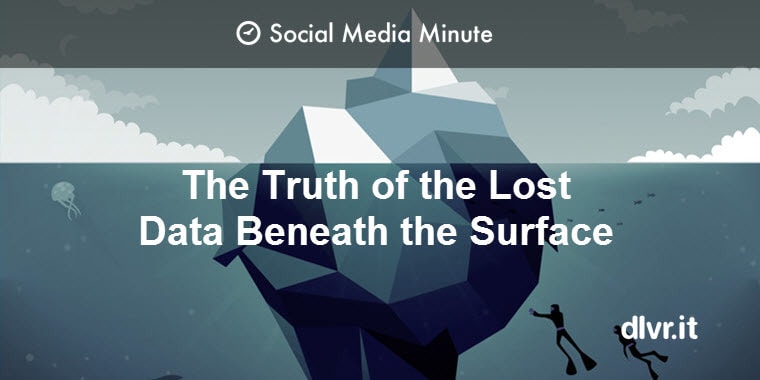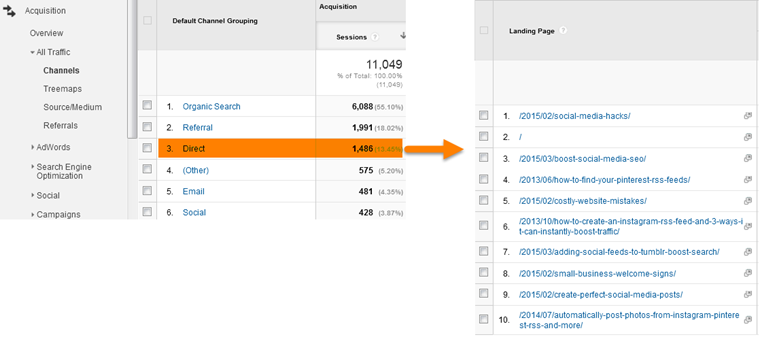
How to Reveal the Secrets Behind Dark Social Hidden Metrics to Boost Social Media
How do you know if your social media efforts are “really” paying off? With limited time and resources, it’s crucial to know what social media marketing tactics are working. What have you missed – any untraceable links or lost referrer data hiding in a corner?
According to the website analytics provider Chartbeat, nearly 70% of ‘social’ sharing goes untracked while only 25% of sharing “actually” occurs on Facebook and Twitter – combined. The term to describe this is called Dark Social.
What is Dark Social?
Have you ever copied and pasted a link into email? If you have, you just participated in Dark Social. Dark Social is the blind spot in website analytics. In many cases, you can tell which sites people were on before coming to your site. Knowing this information is helpful in determining where to spend your time and marketing money.
Dark Social refers to traffic not attributed to a source. It’s hard to measure because it happens when users copy, paste, and then share a link through email, apps, bookmarks or on chat. It’s outside the basic core of the social media ecosystem – a huge goldmine of valuable traffic and customer data remains untapped and bypasses traditional analytics system.
Alexis C. Madrigal, a senior editor at The Atlantic, coined the term Dark Social.
Sharing activity through email, instant messaging and forum posts, aka Dark Social, is three times larger than the sharing activity on Facebook, globally. 69% of all sharing activity takes place via Dark Social globally versus 23% via Facebook – RadiumOne

Quantifying Dark Social Traffic
Credit to Chartbeat for this tip. Dark Social is all those visitors who don’t have a referring site but excluding those people who arrived at the home page.
Using Google Analytics as an example, the left image below shows the ranking of our “Direct” traffic for a given period. Clicking on the link shows the landing pages in which the direct traffic entered the site (see image on the right). If we assume direct traffic to mean someone directly typing in one of our URL’s, that would mean a visitor would have to know the exact URL of one of our articles on the blog – this is not likely.
What is more likely the case, this traffic represents visitors originating from a Dark Social source – email, apps, pasted links or on chat. On the right image below at number two, the slash (/) you see is traffic that is more likely ‘direct’ – people typing in dlvrit.com/blog (as well as other links pointing directly to our blog homepage).
According to RadiumOne, 93% of consumers share content via Dark Social. This iceberg under the water is an incomplete picture and can cause marketers to dump resources into the wrong channels. However, is it realistic to identify all this hidden sharing activity and the users behind it? The short answer is no. However, you can create a bit more of an aggressive plan to classify the unknown or direct traffic.
How to Decrease Dark Social
Step 1. Add trackable codes to URL’s shared on social
The most common referral tag is the UTM Code. Using UTM parameters is a way to track the performance of a custom campaign from the origination point (tweet, email or website). A link with a UTM parameter looks like this: http://yourdomain.com/?utm_source=dlvr.it&utm_medium=Facebook&utm_campaign=SPRINGPROMOTION. Of course, this relies on a reader to copy and paste the entire link.
Learn how dlvr.it automates the process of adding UTM parameters to ALL the links you share on social media.
Step 2. Create shortened URL’s
Step 3. Track the Copy and Paste Activity
A significant portion of Dark Social traffic comes from readers copying and pasting content from your website. Services like Tynt have been trying to solve the copy and paste tracking issue for some time. Tynt is code that can be added to a website. Their WordPress plugin makes installation easier.
Without copy and paste tracking, when a reader copies a portion of a page, the text alone is pasted into the destination. No other metadata is attached. With Tynt installed, now when the user copies a portion of a page, the copied content is automatically wrapped with a URL.
==========
Get credit for your content
- 33Across powered by Tynt ensures your brand travels with your content wherever pasted
- Encourages users to source your content when sharing via copy & paste
==========
Nothing is full proof, but you can make great headway in classifying traffic correctly in your analytics program. Dark Social is a big enough piece of the pie that taking the time to quantify and identify the source is worth the extra effort.
Related Posts
IN THIS ARTICLE





